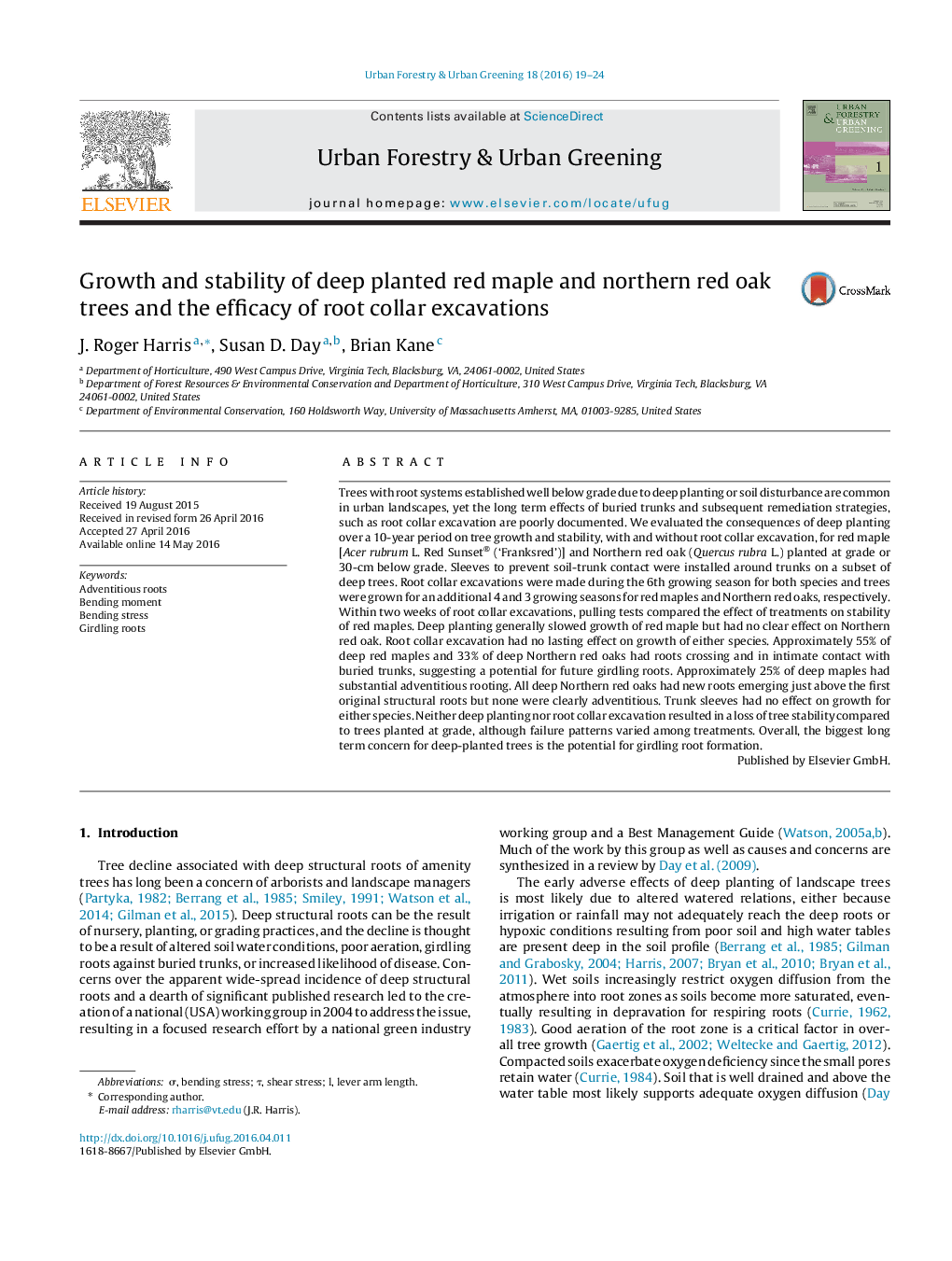| کد مقاله | کد نشریه | سال انتشار | مقاله انگلیسی | نسخه تمام متن |
|---|---|---|---|---|
| 93933 | 160239 | 2016 | 6 صفحه PDF | دانلود رایگان |
• Deep planting slows growth of red maple but not Northern red oak trees.
• Deep planting does not reduce stability.
• Trunk sleeves do not increase growth for deep trees.
• Root collar excavation does not affect growth or stability, but exposes girdling roots.
• Trunk failure was more common than root failure in deep trees with trunk sleeves.
Trees with root systems established well below grade due to deep planting or soil disturbance are common in urban landscapes, yet the long term effects of buried trunks and subsequent remediation strategies, such as root collar excavation are poorly documented. We evaluated the consequences of deep planting over a 10-year period on tree growth and stability, with and without root collar excavation, for red maple [Acer rubrum L. Red Sunset® (‘Franksred’)] and Northern red oak (Quercus rubra L.) planted at grade or 30-cm below grade. Sleeves to prevent soil-trunk contact were installed around trunks on a subset of deep trees. Root collar excavations were made during the 6th growing season for both species and trees were grown for an additional 4 and 3 growing seasons for red maples and Northern red oaks, respectively. Within two weeks of root collar excavations, pulling tests compared the effect of treatments on stability of red maples. Deep planting generally slowed growth of red maple but had no clear effect on Northern red oak. Root collar excavation had no lasting effect on growth of either species. Approximately 55% of deep red maples and 33% of deep Northern red oaks had roots crossing and in intimate contact with buried trunks, suggesting a potential for future girdling roots. Approximately 25% of deep maples had substantial adventitious rooting. All deep Northern red oaks had new roots emerging just above the first original structural roots but none were clearly adventitious. Trunk sleeves had no effect on growth for either species. Neither deep planting nor root collar excavation resulted in a loss of tree stability compared to trees planted at grade, although failure patterns varied among treatments. Overall, the biggest long term concern for deep-planted trees is the potential for girdling root formation.
Journal: Urban Forestry & Urban Greening - Volume 18, 1 August 2016, Pages 19–24
